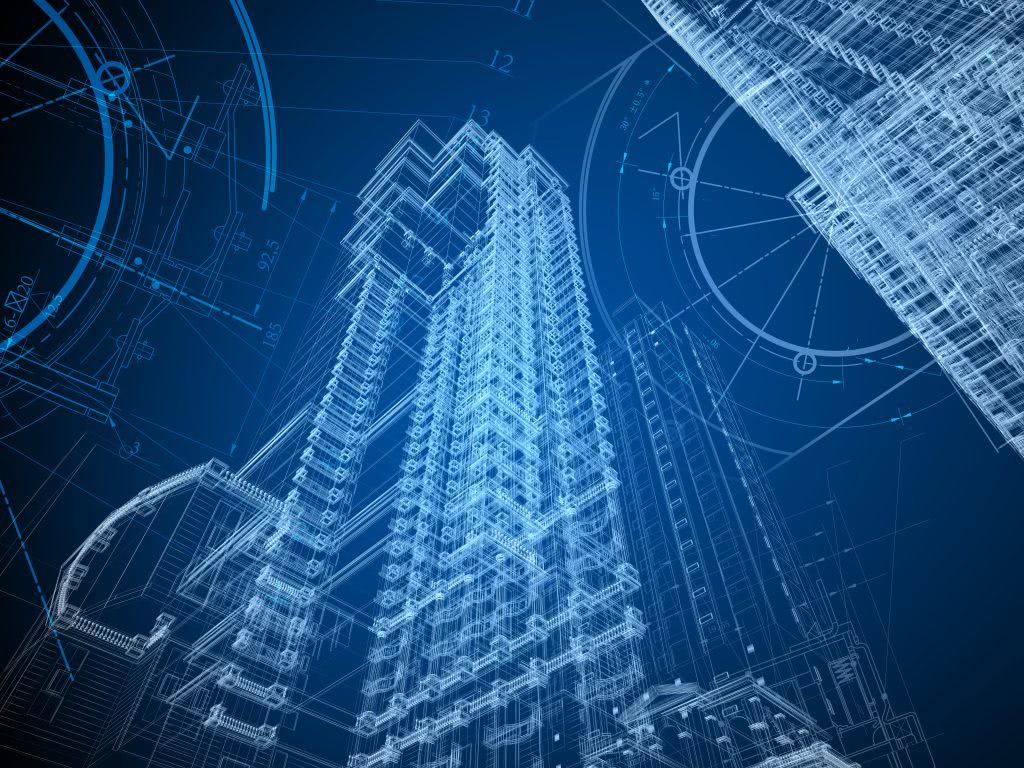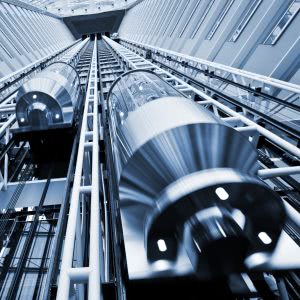
What Makes a Super Tall Tower Super?
As new technologies fuel the race to build higher, three primal drivers simultaneously enable progress and keep it in check.
According to the Council on Tall Buildings and Urban Habitat (CTBUH), 2016 was a record-shattering year: 128 buildings of 200 meters in height or greater were completed around the world, and of those, 10 are super tall towers of 300 meters or greater. These numbers are predicted to grow steadily into 2017 and beyond.
The exponential rise of tall and super tall towers has been encouraged by a number of factors—chief among them, the rising cost of land coupled with rapid population growth in urban areas worldwide and the resulting push to achieve a highly efficient building footprint. While densification has been an undeniable catalyst, what has made the super tall tower logistically possible are technological advances motivated by three primal drivers: safety, comfort and the human ego.
Safety First
At the forefront of humanity’s quest for shelter has always been a desire to protect oneself against the elements and to control the risks posed by those elements. From wind and rain to earthquakes, fire and even gravity, buildings have evolved to provide larger, taller and increasingly protective environments, the strength of which is crucial to guaranteeing occupant safety.
The proliferation of modern skyscrapers in America in the early 20th century was greatly aided by structural frames made of iron and steel. Coupled with lightweight, glazed building skin, these tall structures could withstand increased gravitational and lateral forces. Additionally, modern fireproofing helped to mitigate the risk of fire that led to the devastation of dense urban cores in early European and American cities.
The more recent development of advanced structural concepts such as bundled tube, belt trusses, outriggers and mega columns combined with cutting-edge research in the structural properties of building materials, wind engineering, wind-tunnel testing and mechanical damper technologies have further accelerated the skyscraper’s upward ascent.
Additional advancements in structural engineering, life safety, material technologies and data processing capabilities that simulate the super tall tower’s complex behaviors in wide-ranging scenarios have helped immensely in resolving and mitigating risks. As these have been brought under control, architects, builders and local authorities have grown more confident in the pursuit of size and scale.

What is also interesting about the evolution of super tall tower is the precedent-setting nature of its development and the changing role of building codes. With little or nothing to refer back to, building codes have often relegated to playing catch-up, surpassed by cutting-edge simulations and performance-based design that help guarantee safety for the building’s inhabitants. For instance, technological advances now allow life safety simulations such as computational evacuation modeling, opening up new possibilities for performance-based egress design in the face of catastrophic events rather than relying on codes that do not readily apply to super tall structures.
Quality of Life

Of course, no tall tower could exist without the achievements of American industrialist Elisha Graves Otis. His invention of the modern safety elevator, first demonstrated at the 1854 New York World’s Fair, was one of the original enablers of modern skyscrapers. It’s an old technology that is still being improved upon: increased speed, capacity and zoning efficiency and new tools like destination dispatch systems and double-deck elevators enhance comfort and convenience. These are essential in keeping pace with occupants’ service expectations, an element that is particularly important considering the premium price tag that comes with taking up residence in a super tall tower for work, life or play.
With more floors to fill, more uses and users could be accommodated, and thus the idea of tall tower as a “city within a city” was born. The complexity of stacking a mix of uses in a single tower cannot be understated, but the synergy and efficiency created by co-location with shared systems and infrastructure within a relatively compact footprint are primary benefits.
Yet tall towers can also be energy hogs, and in a world where the built environment accounts for 40% of energy consumption and sustainable design is a prerequisite rather than a luxury, strict adaptation is required. While keeping occupant comfort front of mind, advances in mechanical, façade, lighting and sustainability engineering have upped the green quotient for tall towers. Additionally, centrally connected Building Integration Systems (BIS) play a vital role in enhancing occupant comfort and peace of mind by sensing, controlling and moderating the building’s total ecology, including air quality, temperature, energy and resource usage, emissions, life safety and security.
Ego: The Irrational Innovator
Since ancient times, imposing structures like the Great Pyramids of Giza, the Great Wall of China and the Lighthouse at Alexandria have been used to inspire awe and fear, as tools of political propaganda and militaristic pursuits. While the urge to build high might not be so overtly despotic today, building tall can still very much be attributed to a quest for power and dominance. Whether as a symbol of economic prosperity of a company or an ownership, a draw for tourists and tenants, or as part of a potent marketing strategy for a local government engaged in enhancing its brand, the iconic and symbolic nature of super tall and mega tall towers inevitably comes with a few bragging rights.
While architects, developers and government leaders may be reluctant to accept such a conclusion, stories abound about large conglomerates and even entire governments falling into financial trouble after overzealously indulging in a construction boom. Then there are the success stories that inspire such efforts to build a landmark: the Empire State Buildings, the Petronas Towers and the Burj Khalifas of the world; buildings that bring to mind a direct association with its place of origin and inspire a huge influx of visitors on a daily basis.
The intangible values that these place-defining structures embody go well beyond monetary and financial gains. Immaterial but critical importance lies in the collective knowledge, experience and insight gained in the planning, design, construction and management of these structures that push the limits of innovation—further proof that there is greater value beyond balance sheets and ROIs.
So, How Tall Can We Build?
When it comes to the discussion of the super tall towers, each of these drivers are both a limit and a boundary to be pushed. Currently, we’re seeing the boundaries pushed so far that the question is no longer how high a tower can reach, but how high it should reach. Responsible urban development requires us to reevaluate the underlying motives and the various contexts of the structures we create, especially at these unprecedented scales. As all buildings have limits on their own useful life cycle, the stakes for super tall towers are, quite literally, higher, making a thorough and honest analysis of its value and impact on inhabitants, the community, the economy and the environment essential to creating a structure that truly stands the test of time.
